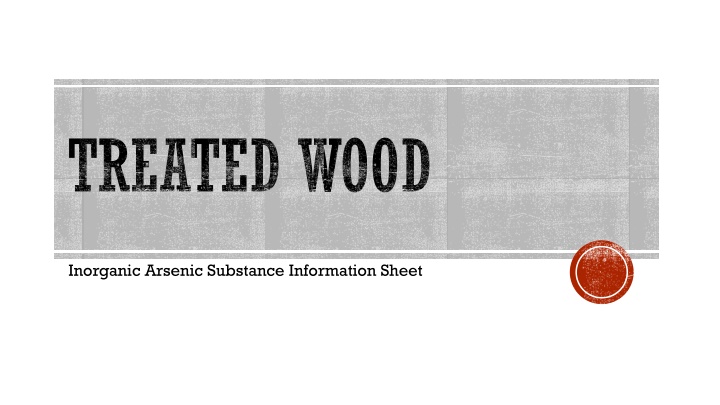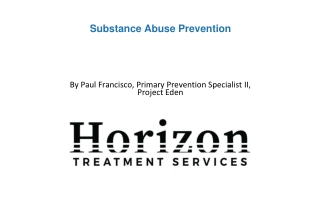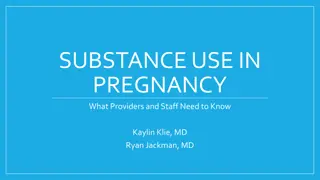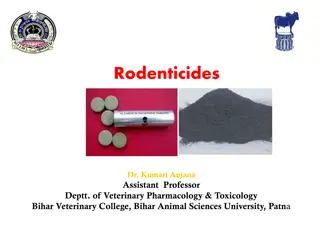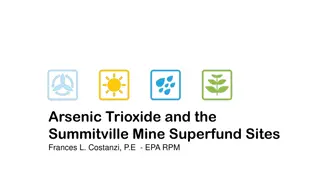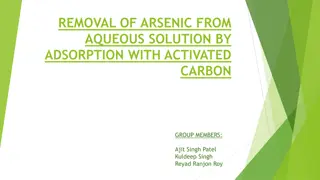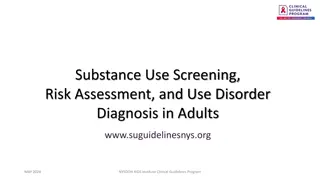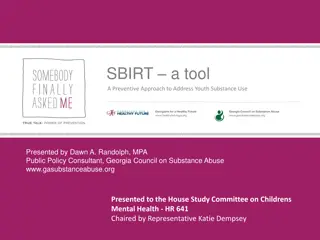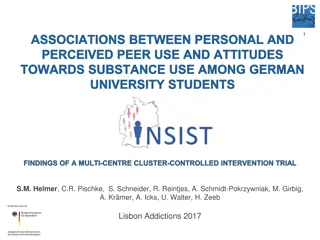Inorganic Arsenic Substance Information Guide
This substance information sheet provides details on inorganic arsenic, its presence in treated wood products, permissible exposure limits, health hazards, protective clothing and equipment requirements, regulated areas, and warning signs. Inorganic arsenic exposure can lead to serious health risks, including lung cancer and skin irritation, emphasizing the importance of proper safety measures and precautions in handling such materials.
Download Presentation

Please find below an Image/Link to download the presentation.
The content on the website is provided AS IS for your information and personal use only. It may not be sold, licensed, or shared on other websites without obtaining consent from the author.If you encounter any issues during the download, it is possible that the publisher has removed the file from their server.
You are allowed to download the files provided on this website for personal or commercial use, subject to the condition that they are used lawfully. All files are the property of their respective owners.
The content on the website is provided AS IS for your information and personal use only. It may not be sold, licensed, or shared on other websites without obtaining consent from the author.
E N D
Presentation Transcript
TREATED WOOD Inorganic Arsenic Substance Information Sheet
SUBSTANCE IDENTIFICATION Inorganic Arsenic Copper acetoarsenite, arsenic and all inorganic compounds containing arsenic except arsine, measured as arsenic (As) Power Poles, Traffic Barriers, Rail Road Ties, Traffic Sign Posts Landscaping,
PERMISSIBLE EXPOSURE LIMIT. 0.01 milligrams per cubic meter of air (same as 10 micrograms per cubic meter of air) as determined as an average over an 8-hour period. No employee may be exposed to any skin or eye contact with arsenic trichloride or to skin or eye contact likely to cause skin or eye irritation.
ACTION LEVEL 0.005 milligrams per cubic meter of air (same as 5 micrograms per cubic meter of air) determined as an average over an 8-hour period.
REGULATED AREAS. Only employees authorized by your employer should enter a regulated area.
HEALTH HAZARD DATA The health hazard of inorganic arsenic is high Exposure to airborne inorganic arsenic may cause lung cancer, and it can be a skin irritant. Inorganic arsenic may also affect your body if swallowed. One compound in particular, arsenic trichloride, is especially dangerous because it is highly corrosive and it can be absorbed readily through the skin. Because inorganic arsenic is a poison, you should wash your hands thoroughly prior to eating or smoking
PROTECTIVE CLOTHING AND EQUIPMENT Respirators. Protective clothing. You must not eat, drink, smoke, chew gum or tobacco, or apply cosmetics in the regulated area, except that drinking water is permitted. If you work in a regulated area your employer is required to provide lunch rooms and other areas for these purposes. If you work in a regulated area, your employer is required to provide showers, washing facilities, and change rooms. You must wash your face and hands before eating and must shower at the end of the work shift. Do not take used protective clothing out of change rooms without you employer's permission. Your employer is required to provide for laundering or cleaning of your protective clothing.
SIGNS AND LABELS When the PEL is exceeded, your employer is required to post warning signs and labels for your protection. Signs must be posted in regulated areas. The signs must warn that a cancer hazard is present, that only authorized employees may enter the area, and that no smoking or eating is allowed, and that respirators must be worn.
MEDICAL EXAMINATIONS If your exposure to arsenic is over the action level at least 30 days per year, or your have been exposed to arsenic for more than 10 years over the action level. The physician must not tell your employer any conditions he or she detects unrelated to occupational exposure to arsenic but must tell you those conditions.
OBSERVATION OF MONITORING When Air Monitoring is conducted you have the right to know who and when the monitoring will happen. You or your representative may observe the monitoring. You will be advised of the air monitoring results.
ACCESS TO RECORDS You have the right to see the records for your physical exams and air monitoring results.
TRAINING AND NOTIFICATION Additional information on all of these items plus training as to hazards of exposure to inorganic arsenic and the engineering and work practice controls associated with your job will also be provided by your employer. If you are exposed over the permissible exposure limit, your employer must inform you of that fact and the actions he or she is taking to reduce your exposures
